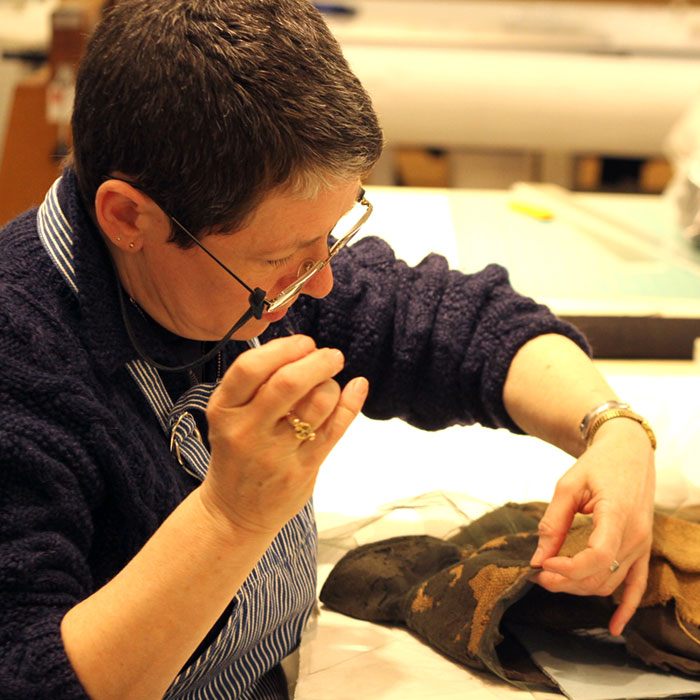« All our conservation treatments
MACC’s textile conservator is experienced identifying and treating wide range of textile-based materials including tapestries, rugs, flags, quilts, coverlets, samplers, curtains, and lace. Works as diverse as archaeological fragments, modern and contemporary art objects, upholstery, ecclesiastical textiles, textile basketry, fans, dolls and costumes are all provided expert treatment. In addition to performing in-laboratory conservation treatments, the conservator also conducts object-by-object condition surveys of museum collections.
Textiles are rarely flat and seldom made of one basic material or component. They may be constructed of natural fibers, such as wool, silk, cotton, linen, hemp, or man-made fibers including nylon, polyester, acetate, and plastic. Manufacturing techniques also widely vary: woven, knitted, plaited, pieced, or felted. The surface may be embellished with thread, glass or metal beads, feathers, buttons, zippers, fringe, rings, or paint.Conservation treatments can include mending, lining, wet or dry cleaning techniques, stabilization, loss compensation, and mounting for display.

Beth McLaughlin, Senior Textile Conservator
Ms. McLaughlin was the Chief Textile Conservator at Biltmore House in Asheville, North Carolina from 2005 to 2010. She has significant training and experience in the conservation of historic and contemporary textiles and the preservation, care and re-housing of three-dimensional objects. Ms. McLaughlin received a Masters in Fine Arts and a Bachelor of Fine Arts summa cum laude from Ohio University and received advanced training at the Smithsonian Institution’s Conservation Analytical Laboratory and also at Colonial Williamsburg. She is a Professional Associate of the American Institute for Conservation, Textile Specialty Group, and a member of the Southeast Regional Conservation Association, the American Quilt Study Group, and the Textile Society of America.